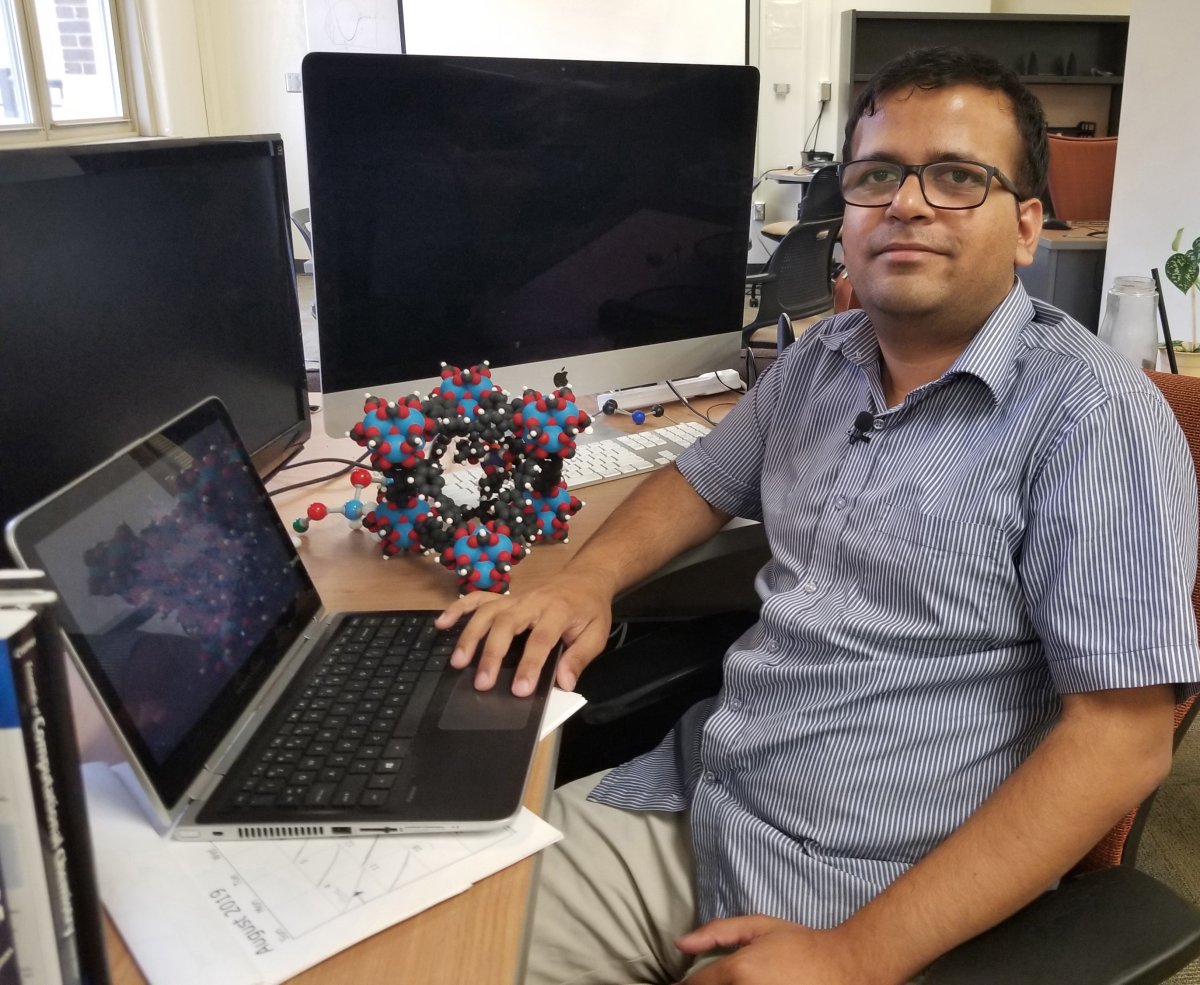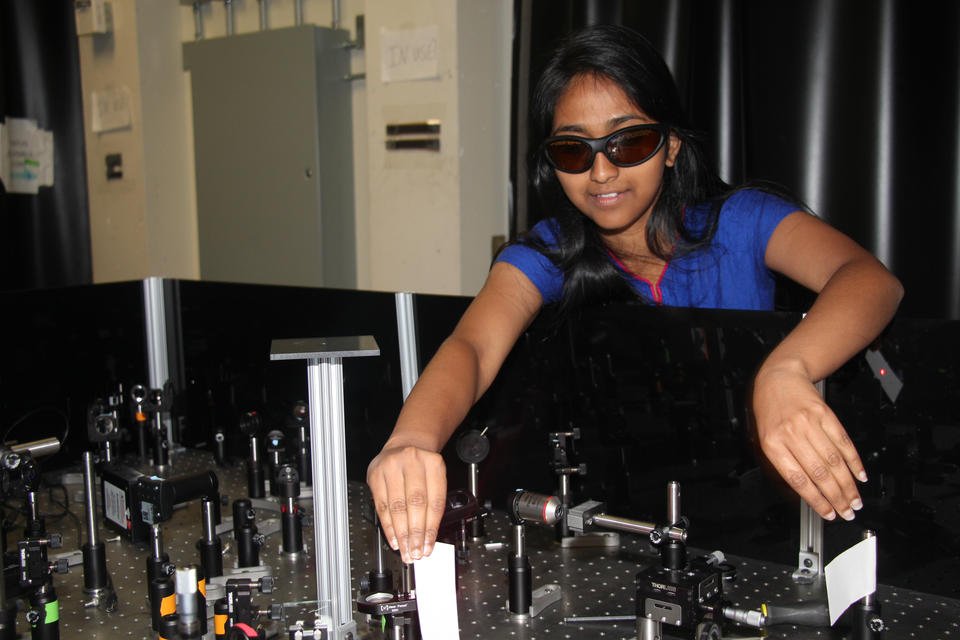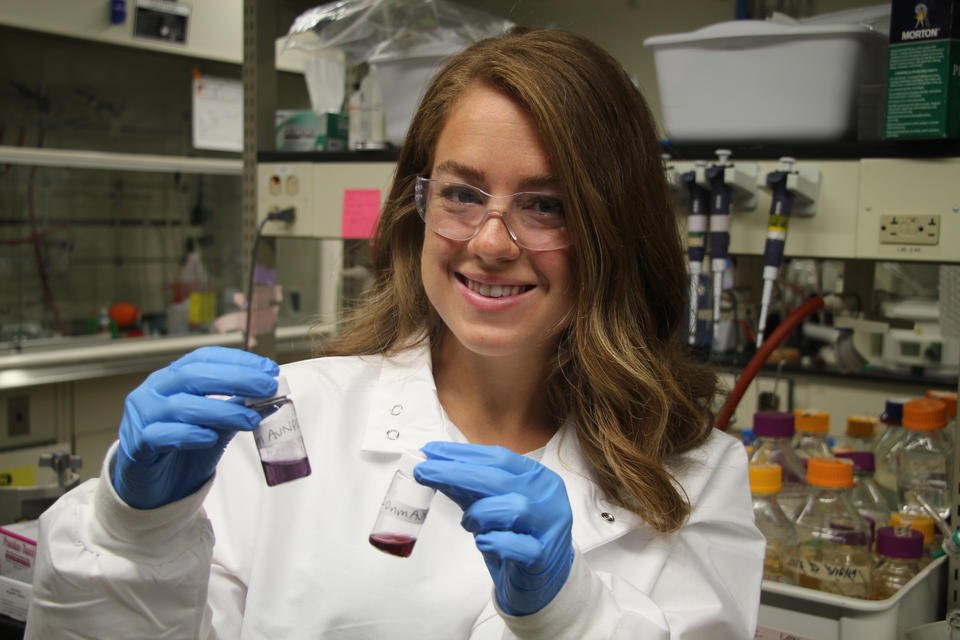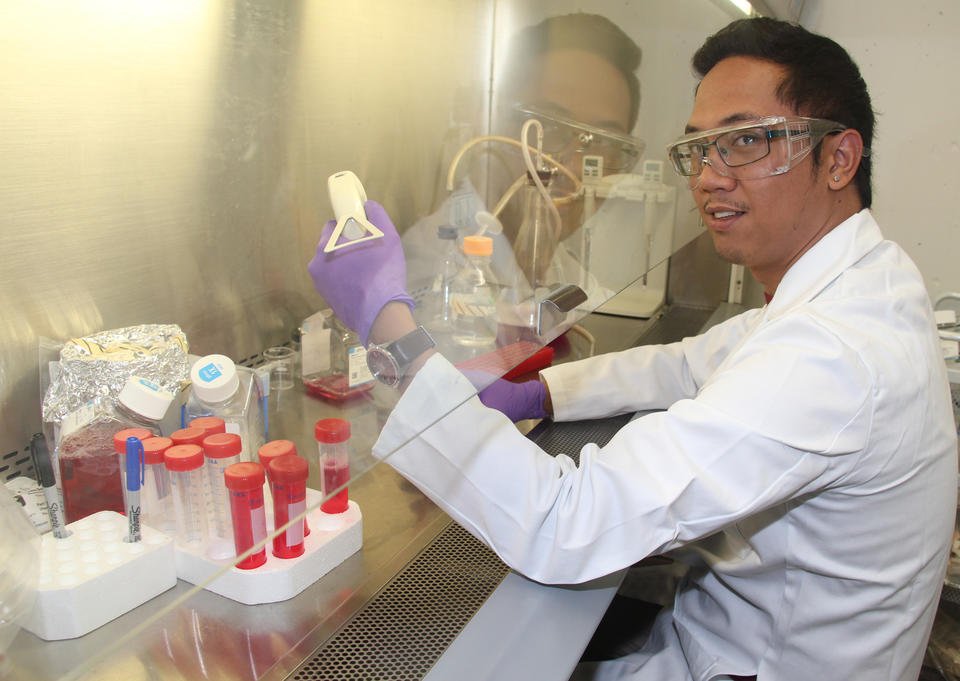Department’s environment of diversity, collaboration, and caring enrich graduate school life

MINNEAPOLIS / ST. PAUL (07/21/2020)—While research is at the core of graduate school for students, the Department of Chemistry has some unique features that set it apart and help its students thrive and succeed. The department fosters a diverse community and works hard to create an environment where collaboration and caring are the norm. Students are also empowered to participate and lead a variety of initiatives and committees and engage in outreach in and with the University of Minnesota and its broader Twin Cities community.
Four outstanding graduate students, including Kajari Bera who is advised by Professor Renee Frontiera, Stephanie Mitchell who is advised by Professor Erin Carlson, Debmalya Ray who is advised by Professor Laura Gagliardi, and Kiall Francis Suazo who is advised by Professor Mark Distefano reflect on their experiences in the Department of Chemistry.
Diversity & Collaboration
"The inclusivity that the department promotes makes everyone feel like they belong here." — Kiall Francis Suazo
The best things the department offers are its diversity and commitment to inclusivity, said Debmalya and Kiall. It has provided them with rich opportunities to learn about people from other countries and their cultures, traditions, backgrounds, and experiences that motivate them to pursue science, chemistry, and research.
“The inclusivity that the department promotes makes everyone feel like they belong here,” said Kiall. “Since everyone feels welcome, it is easy to foster a collaborative atmosphere within the department. I see different groups working together on multiple projects. Something as simple as sharing reagents and equipment is common among labs, which results in a productive environment.”
For Kajari, the collaborative nature of research within the department, and the feeling of belonging and togetherness among the department’s different research groups is a source of inspiration and motivation.
Stephanie agreed: “I find the people in this department, especially those that I work with, motivating. Being able to cheer each other on or lend a hand, even just with little things, can make all the difference. It’s easy to feel like part of a team.”
That spirit of collaboration also opens doors to myriad multi-disciplinary research opportunities at the University of Minnesota and across the country. For example, Stephanie and Kiall’s research encompasses chemical biology, using tools in chemistry to study, gain greater understanding, and solve problems in biology. Kiall is working with scientists specializing in biological research focused on understanding the fundamentals of protein prenylation in Alzheimer’s disease, amyotrophic lateral sclerosis (ALS), viral infections, and lung cancer. Stephanie is investigating the chemistry governing the interactions between nanoparticles and the environment, working with scientists throughout the nation as part of the National Science Foundation’s Center for Sustainable Nanotechnology.
“I feel so privileged to be a member of the chemical biology collective at the University,” said Stephanie, who has also been involved in the National Institutes of Health Chemical Biology Interface Training Grant, which enables students to participate in cross-discipline research interactions and experiences.
“Not only do the chemical biology labs within the department support each other, there is a strong interconnectedness to other departments across the university,” said Stephanie. “This sense of camaraderie is foundational for strong scientific collaborations."
As a computational chemist, Debmalya’s general research interest is based on using supercomputers to solve chemistry and materials science problems, which includes the Minnesota Supercomputing Institute. Through his work with Professor Laura Gagliardi who is director of the Department of Energy Inorganometallic Catalyst Design Center, he often collaborates with experimental and other theoretical groups on various projects.
“I have collaborated with several groups in the Chemistry and Chemical Engineering & Materials Sciences departments at University of Minnesota and have also had the opportunity to collaborate with groups at Northwestern University and Notre Dame University,” said Debmalya.
“I have collaborated with several groups in the Chemistry and Chemical Engineering & Materials Sciences departments at University of Minnesota and have also had the opportunity to collaborate with groups at Northwestern University and Notre Dame University.”—Debmalya Ray
Caring
Built into and fostered by the department is a community of caring. For the past seven years, the Department of Chemistry has been focusing on the mental health of its students, including reducing stress and connecting students with resources. That has not gone unnoticed by students.
Debmalya Ray uses supercomputers to solve chemistry and materials science problems. His current major research focus is to find low-cost, non-toxic, and earth-abundant materials for solar energy related applications.
“To me this is a very important issue and plays a major role in graduate-life success,” said Debmalya. “Graduate school can be overwhelming at times.”
The department has a cadre of mental health advocates trained to identify and respond to distressed students and refer them to resources. In 2012, it formed the student-led Community of Chemistry Graduate Students (CCGS) that promotes healthy academic environment for all graduate students. The CCGS connects students with existing university resources and refines and develops new resources aimed at increasing graduate student health, happiness, and productivity. It also plans a variety of fun and healthy events and workshops.
“The CCGS has been most helpful in its efforts in raising awareness for graduate student mental health,” said Kiall. “I talked to one of its members about my struggles in research and personal life. They referred me to appropriate resources to help me better cope with the challenges of doing research as well as finding balance between life inside and outside of research.”
Outreach
“It is really important to be involved in something other than research because it gives us an opportunity to help and be involved with society.”—Kajari Bera
Graduate students are busy, but they find time to participate in a variety of student-led organizations at the University, volunteer for outreach both at the University and in the community, and for having fun outside of the laboratory with friends.
“Do things that you love doing outside research is wonderful advice,” said Kiall. “The Twin Cities is a great place to be in since there is always something to do whatever the season is.”
Like their mentors and advisers, they, too, are committed to fostering a love of science and chemistry in others and helping and giving back to society.
“It is really important to be involved in something other than research because it gives us an opportunity to help and be involved with society.” said Kajari. “It also acts as extra-curricular activity to keep us engaged, which helps us come back to research with a fresh mind.”
Kajari is a member of the Community of Chemistry Graduate Students, is treasurer of the Bengali Student Society of Minnesota, which organizes biannual cultural events, volunteers regularly with Women in Science & Engineering activities such as Cool Chemistry for 7th grade girls, and helps with state fair exhibitions, Energy & U shows, and other outreach programs. She is also chair of the Gordon Research Seminar for vibrational spectroscopy in 2020.
Stephanie loves teaching, figuring out how to make science understandable and sharing with others how exciting and beautiful it can be. Through the Department of Chemistry, she works as a volunteer and instructor with the student-created and -run Scimentors program, which helps people in the community study for their general equivalency diplomas (GED). During the summer, she also participates in several outreach events through the Eureka!® Program (Girls Inc, YWCA) to fortify the interest of high school girls in science, technology, engineering, and math.
“Eureka! has been exciting and challenging as I consider how to build on established activities and create new ones designed to attract the attention of the girls while also providing them with tangible and valuable information,” said Stephanie. “When I develop new outreach activities, I try to think about what would have gotten me jazzed as a kid.”
Through her involvement with the Center for Sustainable Nanotechnology, Stephanie’s outreach also includes communication and she is engaged with writing blog posts and recording podcasts with interesting guests to help communicate about nanotechnology in a way that is stimulating and understandable to the public.
“Writing for the blog is a fun challenge because you need to wrestle with the topics in order to distill them in captivating, but still meaningful messages, and finding examples of ways that the public can recognize the science in their own lives,” said Stephanie. “Writing for the blog also gives me the freedom to keep digging into topics that are a little outside of my immediate research area. For example, my favorite blog post was about the process of nucleation and how that’s the reason your beer bubbles in a glass as well as being a method to synthesize nanoparticles.”
In addition to his research, Debmalya is involved with a coding club called Pseudo-Sudo, with students co-teaching each other software and techniques for supercomputing. One of his social outlets is the University’s Salsa Dance Club. He, too, attends and volunteers with a number of student-led groups such as the Community of Chemistry Graduate Students, the Council of Graduate Students, and the Council of International Graduate Students. He also volunteers at food-packaging events in the community such as Feed My Starving Children.
“The outreach that the Department of Chemistry participates in is truly inspiring,” said Stephanie. “It’s very encouraging to be surrounded and supported by other members of the department who also share this passion and are willing to really invest themselves.”
Celebrate
“So, when you or friends and lab mates overcome a challenge, don’t be afraid to be excited and celebrate! We’re all on the edge of something new together.”—Stephanie Mitchell
Opportunities for graduate students to succeed, thrive, and engage in research focusing on solving some of most important human health, energy, and environmental problems are abundant in the Department of Chemistry. When things click, creating new experiences, opportunities and excitement, it is important to celebrate.
“What has made my time in graduate school more joyful is just being open to excitement,” said Stephanie. “Sometimes research can get hard and slow and you feel like you are stuck in the mud. So, when you or friends and lab mates overcome a challenge, don’t be afraid to be excited and celebrate! We’re all on the edge of something new together.”



